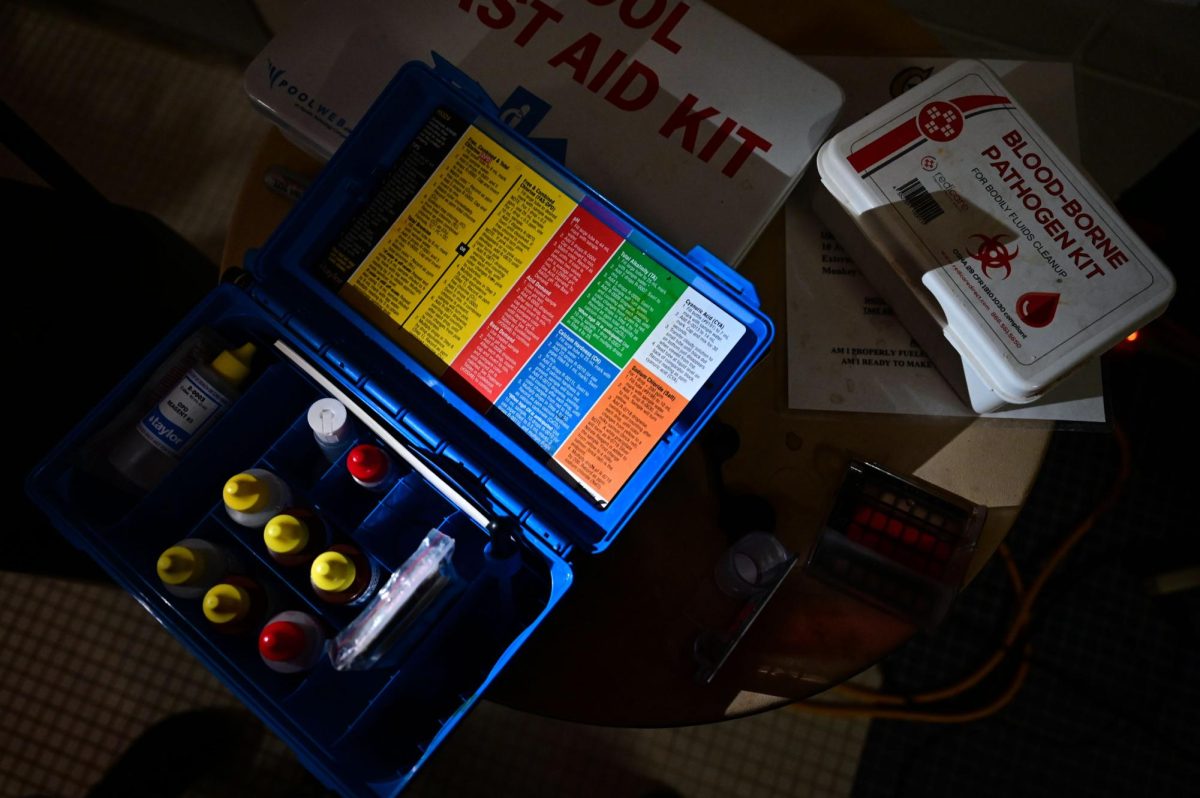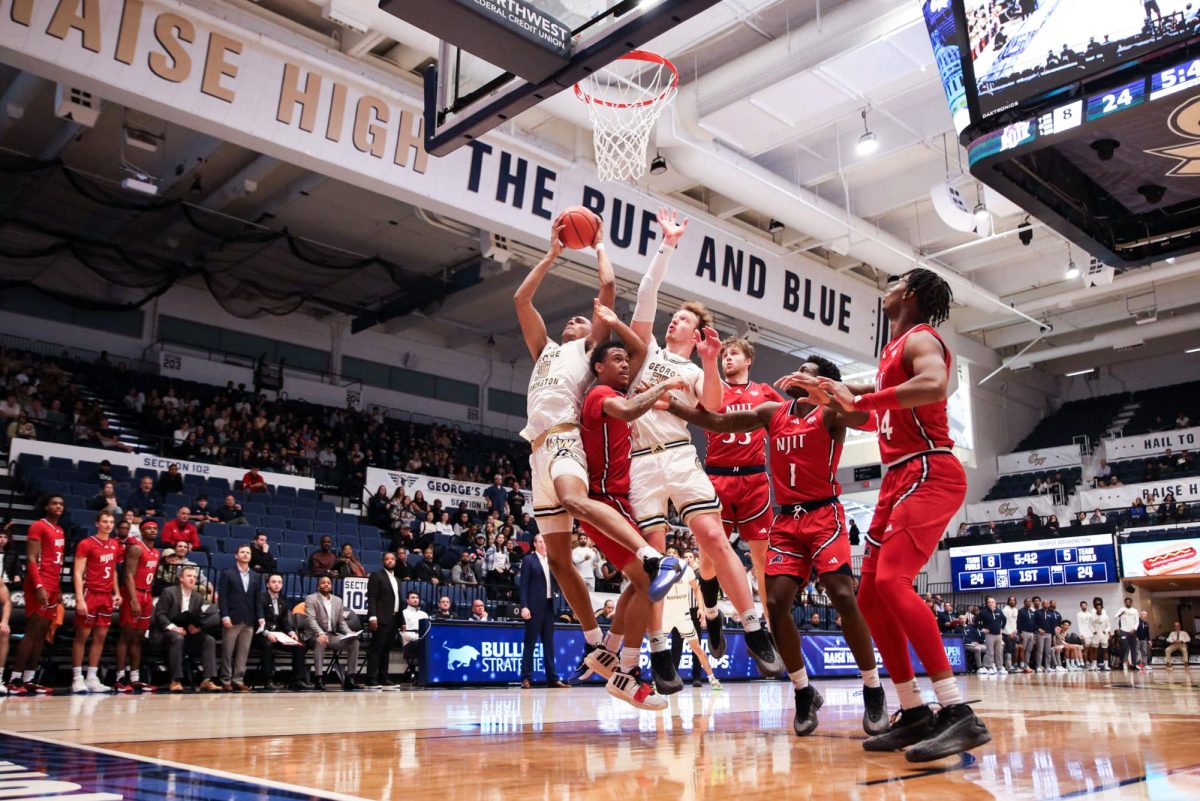 Ron Christie’s GW baseball career got off to a promising start. As a freshman, the 6-3 right-hander went 2-1 and struck out 24 batters in 31 innings of work. As a sophomore, Christie started five games for the Colonials, compiling a record of 2-4 with 26 strikeouts. But after pitching in a game against Maryland late in the season, the Lincroft, N.J., native saw his pitching career and his baseball career flash before his eyes.
Ron Christie’s GW baseball career got off to a promising start. As a freshman, the 6-3 right-hander went 2-1 and struck out 24 batters in 31 innings of work. As a sophomore, Christie started five games for the Colonials, compiling a record of 2-4 with 26 strikeouts. But after pitching in a game against Maryland late in the season, the Lincroft, N.J., native saw his pitching career and his baseball career flash before his eyes.
Almost all pitchers experience soreness in their pitching arms following a game. But that particular night, Christie’s arm felt sorer than usual. He had thrown many split-fingered fastballs in the game and still wonders to this day if that caused his problems. He tried pitching a couple days later, but the pain forced him to come out after only one inning. He decided to rest his arm for a couple of weeks and seek treatment. That didn’t help either, but Christie decided to stick it out and play through the pain.
After the school year, he played summer ball in Virginia. He said the warm weather loosened up his arm and gave him the confidence to throw a little harder. But the harder throwing just worsened the pain, and that’s when Christie decided to see a doctor.
He met with Dr. David Altchek, the team doctor for Major League Baseball’s New York Mets who had performed elbow surgeries on pitchers Al Leiter and Jason Isringhausen. Altchek took an MRI and told Christie that 75 percent of the ligament in his right elbow was torn. To repair the damage, Christie would need Tommy John surgery.
Tommy John surgery was named after the former major league pitcher who tore his ulnar collateral ligament while pitching in 1974. The injury was considered to be career-threatening until John went to see Dr. Frank Jobe. Jobe took a tendon from John’s right arm and used it to replace the torn ligament in his left pitching arm. It was something that had never been done before, and nobody knew what the outcome would be. Any uncertainties were gone a year later when John came back to win 20 games. He would go on to win 170 major league games after the surgery.
The surgery not only saved Tommy John’s career, but it actually made the ligaments in his elbow stronger than ever. Professional pitchers including Brett Saberhagen and John Smoltz and outfielder Jay Buhner have undergone the surgery. The Chicago Cubs’ Kerry Wood, who in 1998 tied a major league record with 20 strikeouts in a game, underwent the surgery last April. Exactly one year after the surgery, Wood made his fifth rehabilitation start Monday in extended spring training for the Cubs. His fastball hit 95 miles per hour on the radar gun.
The decision to have Tommy John surgery was a tough one for Christie. Doctors told him that he could live a perfectly normal life without the surgery, but the surgery was a must if he wanted to pitch again.
Right then and there, I said, `Alright, I got to have this done,’ Christie said. But I couldn’t say yes right then because I was in shock first of all and nervous and just not sure. I decided to sleep on it and think about it for a couple of days.
Christie spoke with his parents, whom he said were very supportive, and they ultimately left the decision to him.
My parents didn’t say much about it, but I’m sure my dad, deep down, wanted me to do it because he wanted to see me become a ballplayer, Christie said. But they basically left it up to me, and I decided to have it done.
Since Christie suffered the injury while playing for the Colonials, GW put down the $25,000 for the four-hour procedure that was performed by Altchek in June 1998. Christie was in a cast for two weeks following the surgery and then had to wear a brace until late August that restricted him from bending his elbow completely. After the brace, he started the long rehabilitation process. The doctors wanted to leave the elbow area alone and let it strengthen, so they focused they focused rehabilitation exercises on his shoulder.
In late November 1998, Christie threw a baseball for the first time since before the surgery.
It was very weird, he said. I was very careful because I hadn’t thrown a baseball in months. I threw with my doctor. It wasn’t very intense.
Altchek put Christie on a throwing program in December, in which Christie gradually increased the distance and number of throws every few days. He said there were some good days and some bad days, but he never gave up.
There were discouraging days when I thought, `how am I going to pitch? I can’t even throw the baseball right now,’ Christie said.
But Christie spoke to several members of the Florida State University baseball team who had undergone the procedure, and their feedback helped him out. One of them had made a full recovery from the surgery in 10 months, and that gave Christie hope of pitching for the Colonials last season. But the soreness never went away and halfway through the season, Christie decided to red-shirt for the year, an experience he called extremely frustrating.
It’s hard to watch your team play when you can’t, he said. It’s very hard. You don’t feel like part of the team.
Christie went home last summer, lifted like crazy and threw every day. His goal was to pitch when he came back to school in the fall.
But that goal was short-lived as the cold weather made it difficult for Christie to loosen up his arm. After pitching just one inning in a fall league game, he decided to shut down again until the weather warmed up.
The team made its annual trip to Florida after Christmas break, and when Christie was warming up in the bullpen, he felt a familiar pain. At that point, enough was enough and he decided to go back to Altchek.
Altchek told him that the ligament looked great, but Christie’s ulner nerve had swollen, and that was the cause of the pain. He prescribed Christie with an anti-inflammatory and Christie noticed a drastic improvement after only two days.
He threw 80 pitches in the bullpen, twice as many as he had thrown during the fall. His velocity was better, and he even threw some sliders. Before that, he had been throwing only fastballs.
Several weeks later, Christie worked a pair of relief outings for the Colonials, and on March 15, he made a six-inning, 60-pitch start against Georgetown. Christie pitched six more innings Tuesday of two-hit ball and received a no-decision in GW’s 3-2 loss to Towson University.
It’s an unbelievable feeling (to be back), he said. It’s so great to be back and feel like part of the team again.
Christie has made his presence felt on the team this season, earning a 2-0 record with a 2.86 earned run average in three starts. He doesn’t throw his splitter any more and uses a change-up instead. Christie said he often thinks about his arm when he’s pitching.
The psychological part is huge, he said. You’ve got to get over the fact that you feel like when you throw, it’s going to tear. It’s really not, because it’s stronger than ever.
His arm still needs more time to recover than it used to after he pitches. He said while it feels great at the beginning of the game, it gradually tightens up as the game goes on. And, as for his velocity, he said he doesn’t care at this point.
I don’t want to be thinking, `The (radar) gun’s up there. Let me pump it up at this point,’ Christie said. I don’t even want to know until I’m 100 percent.
To get to 100 percent, the average time period varies, but it takes about a year and a half to fully recover. Christie said the last year and a half was frustrating, but in the end, he said it was worth it.
I have no regrets, he said. I definitely think (the surgery) was the right decision.
Christie hopes this year’s team can make it back to the NCAAs. Because of his red-shirt year, he officially has junior status, giving him two seasons to accomplish that goal.
GW last made the NCAA Tournament in 1992 after winning the Atlantic 10 Tournament title, but lost to Wichita State University and the University of Minnesota.
Even if the team never makes it to the tournament, Chri
stie can’t complain. Christie can thank his doctors and even Tommy John for saving his arm and his baseball career.






